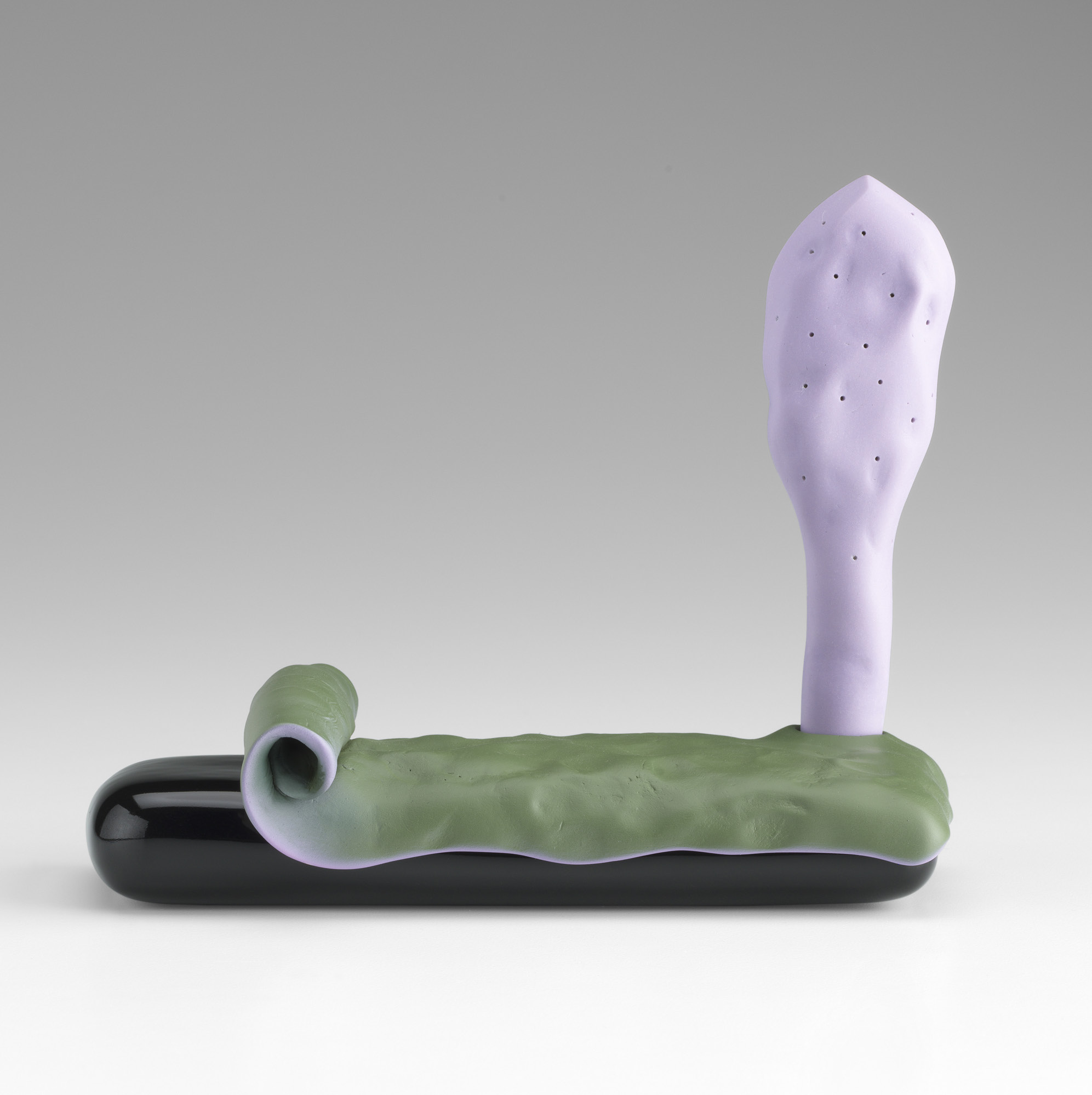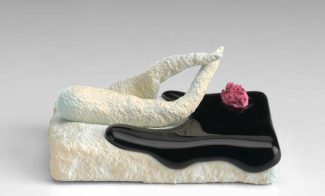Ron Nagle (Born 1939 in San Francisco) is renowned for creating intimately scaled and original sculptural works. The artist’s compact artworks bring together virtuoso techniques and materials from traditional ceramics, experimental sculpture, and painting. In the 1960s, he began using a low-fire, slip-casting technique to create objects with smooth surfaces and brilliant hues, which he is best known for today. He also started to incorporate synthetic materials such as resin and polyurethane, resulting in unique and often humorous forms. Nagle layers his range of techniques with a diverse array of formal and cultural references from abstract expressionism, the California Light and Space movement, to Japanese Momoyama ceramics. His distinct practice, playing with style and form, ultimately expands the ceramic tradition.
As in his best works, Nagle’s Faberge Leg conflates references and forms from disparate sources to humorous effect. About the size of a sardine can, the sculpture evokes this classic compact container, with a green ceramic layer peeling back to reveal a smooth black porcelain slab, bathed in a glassy, reflective surface. Read from the left to the right, the work also resembles a small bed, but as it progresses horizontally, references shift to landscape as a lavender form sprouts to suggest a cactus or tree, as well as a bodily protrusion. The corporeal allusion is reinforced by the title’s word play, Faberge Leg, conjuring the bejeweled baubles of the tsars to describe the awkward epoxy leg sprouting from this exquisite landscape.

